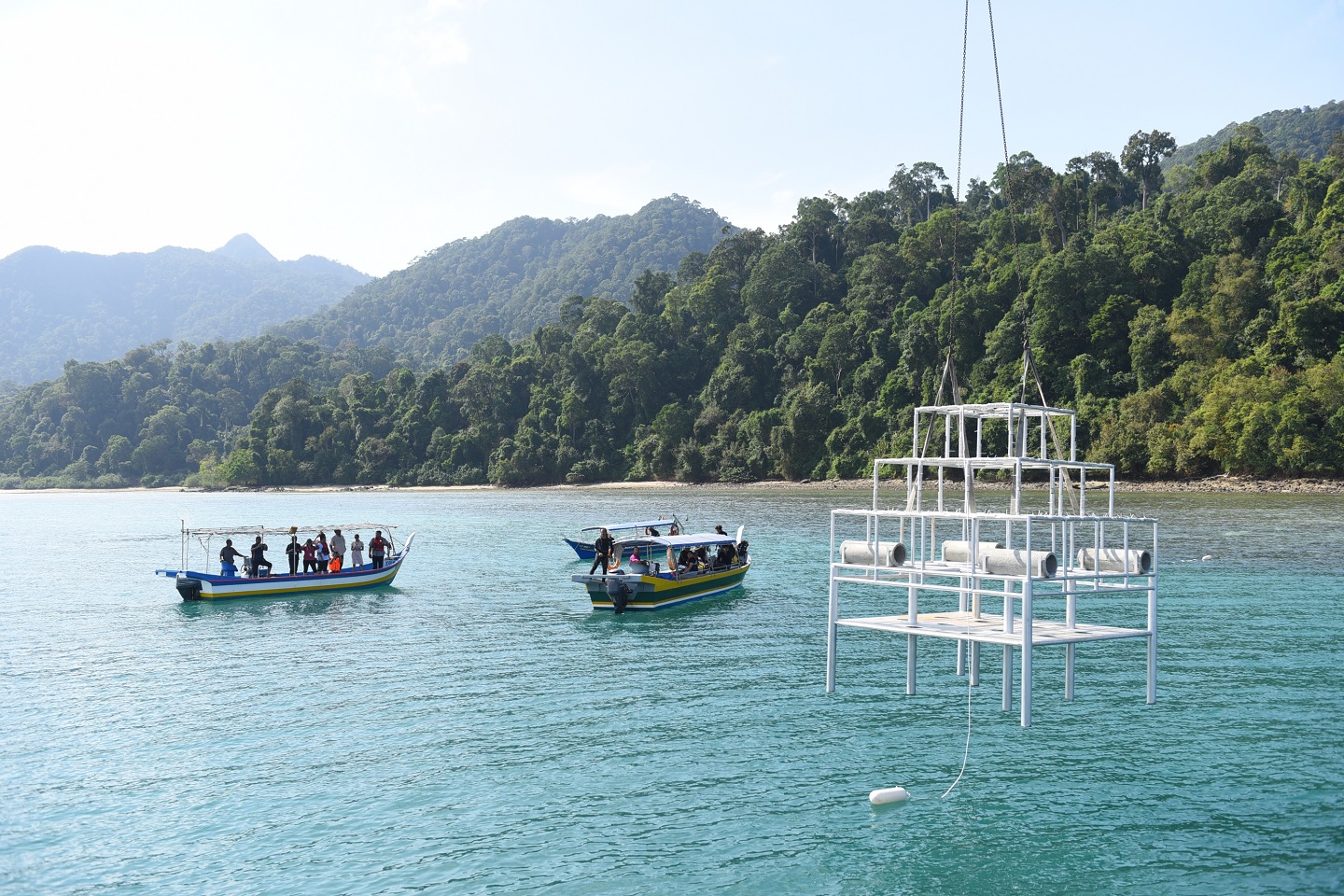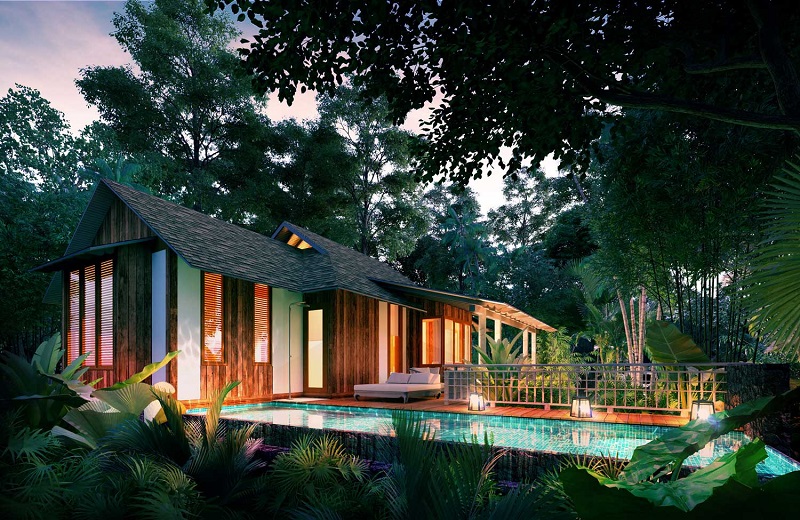
One of the five FADs getting ready to be lowered into Teluk Datai (Photo: The Datai Langkawi)
The recent unveiling of The Datai Langkawi following a 12-month renovation programme was made extra special with the launch of its Fish for the Future initiative not long after it reopened its doors to guests. Besides introducing its refurbished interiors and facilities — including the decidedly luxurious 3,500 sq m Datai Estate Villa — the resort also cemented its continued commitment to preserving and strengthening its natural surroundings, this time by promoting sustainable fishing at Teluk Datai.
Every corporation owes some degree of responsibility towards the community or environment it operates in and this is also the case for the 25-year-old luxury beach resort located in the heart of a 10 million-year-old rainforest and whose business is so inextricably entwined with nature.
Years of research into fishing practices around the island and coral reef health in Teluk Datai and nearby areas by conservationist and resident naturalist, Irshad Mobarak and his passionate nature team has led to the finding that a combination of coastal pollution and poor fishing practices have adversely affected the coral reef ecosystem and caused a decline in the fish population. Fish for the Future aims to address this worrying situation through a three-pronged approach that involves the creation of artificial reefs, engagement with the local community and fishermen, and coral rehabilitation.

Last month, five fish aggregating devices (FAD) were strategically deployed next to a natural coral reef in the Teluk Datai area with the aim of propagating algae and creating additional space for the reef to spread on the structure. Standing at 3.7m and with a life expectancy of more than 50 years, each FAD is made from galvanised steel coated with zinc, and submerged between six to eight metres deep in the sea. Besides removing pressure from the natural coral reef, it provides a gathering point for adult fish of varying sizes.
“Fish swim in a lateral line and will be curious when they ‘hear’ something — the sonar — and they will come and visit it. If they like it, they will stay. The other fishes that eat them will also come and hang around so you will then get bigger fish trying to catch the smaller ones hiding there,” Irshad explained. According to him also, there have been studies that indicated the FAD can be populated as early as three months from deployment and the nature team is excited to see the outcome for themselves.
“It is not new technology but the choice of the design of the aggregating device is well-studied. The substrate surrounding this area is very soft so the wrong kind of aggregating device would sink. The final design is the best as a result of much trial and error,” he said, referring to the 1½ years spent perfecting the FAD’s design in accordance with the guidelines of the United Nations Environmental Programme.
The months following the deployment will lead up to the implementation of a coral nursery to rehabilitate coral reefs within the bay area in tanks at The Nature Centre before being transplanted back into the sea. In the meantime, The Datai Langkawi has already started buying fish from local fishermen as part of the engagement prong of the initiative.
Besides buying their catch, the Fish for the Future initiative was also made possible by the collaboration between the nature team and the local community. “The local community has promised that there will be no more fishing on the reefs so we will definitely see a marked improvement in it [the coral reefs]. “The gentlemen from Kubang Badak who came to the launch would be the best people to prevent the wayward ones from doing so,” said Irshad, who describes the partnership with the local fishermen as a positive one.

“They were very keen and in fact, there were fishermen from other communities asking when they can get involved too. This is why we hope that this can be replicated by other hotels.”
Said The Datai Langkawi general manager Arnaud Girodon, “It is always better to resolve a situation over an agreement rather than trying to exercise coercive measures which can create a rift which we don’t want ... we want to be good neighbours.
“There is a realisation today that fishes are on the decline and something needs to be done. So any initiative that caters to that is music to their ears. That is why they welcome the idea and agree to not fish in some areas for six months and until the fish are mature. It is not only our (The Datai Langkawi) problem but it is everyone’s problem.”
In fact, Irshad said there have been efforts by the local community as well to manage such challenges. “It’s called tuas, a traditional way of doing things and an initiative by the Kuala Teriang community that has some of the wealthier fishermen on the island.”
On whether there are plans to deploy similar structures in other parts of the island, Girodon said, “We’re not in the business of deploying FADs but we welcome knowledge sharing and hope more companies will come on board with this idea,” explaining that the structures will be confined to the resort’s immediate surroundings only.
Like the resort’s popular nature walks, it is Girodon’s hope that in the near future, hotel guests will be able to participate in coral reef rehabilitation as well, and for certified divers, participation can also include the clean-up of the FAD, which takes place once every three months.
Fish for the Future marks the beginning of creating a thriving ecosystem not only for coral reef and fishes but also one where The Datai Langkawi and local fishermen can embark on a good, long-term working partnership.
This article first appeared on Feb 18, 2019 in The Edge Malaysia.


